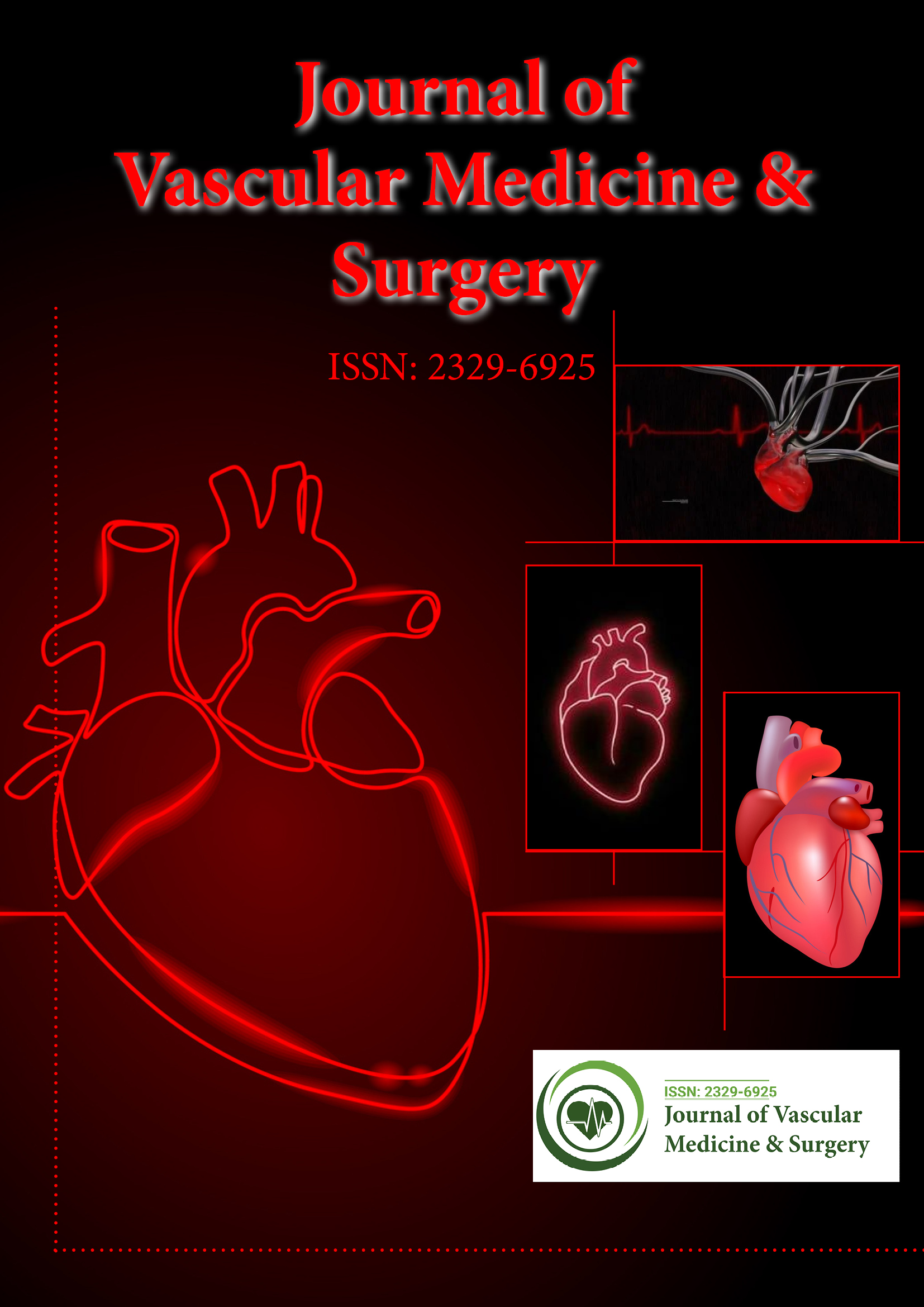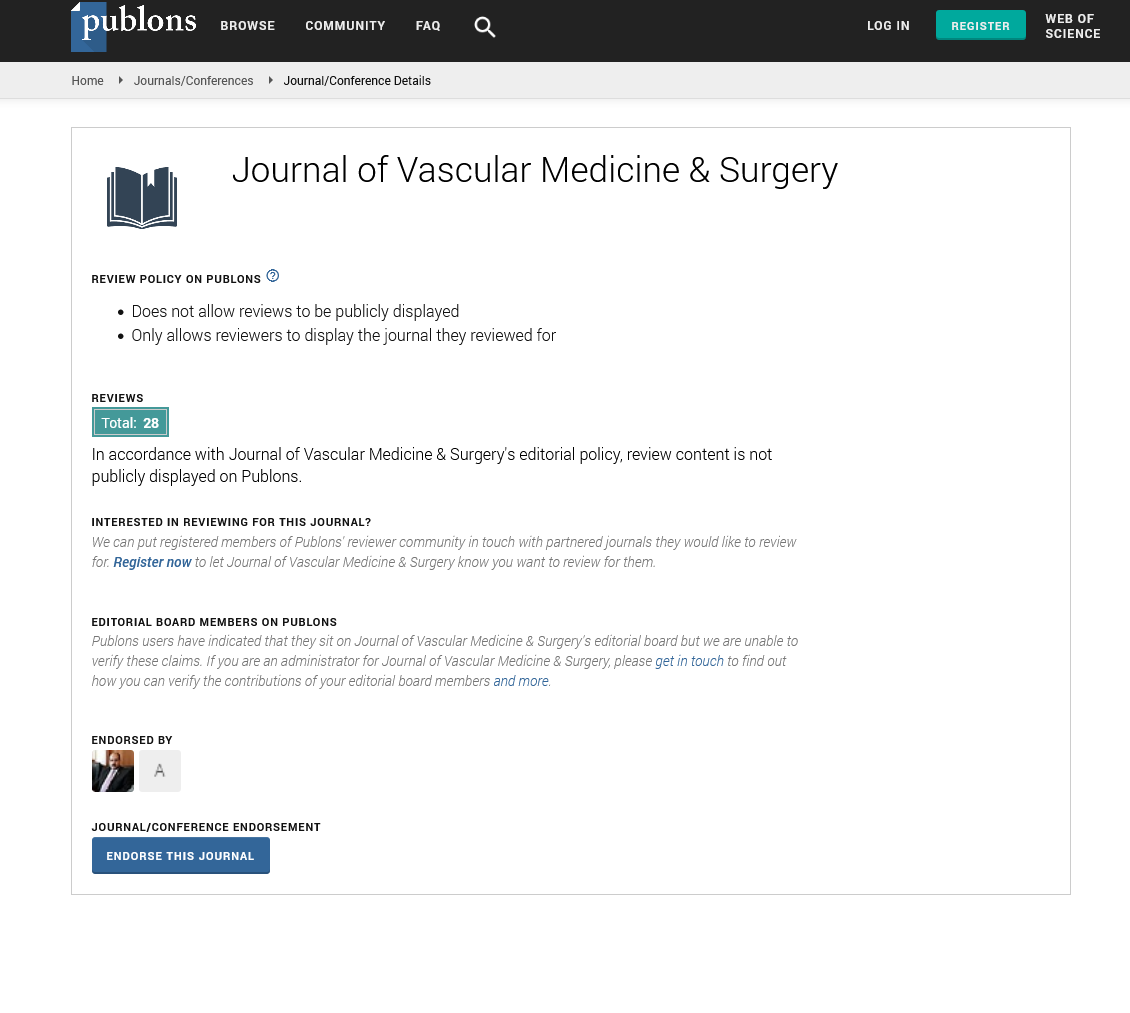Indexed In
- Open J Gate
- Academic Keys
- RefSeek
- Hamdard University
- EBSCO A-Z
- OCLC- WorldCat
- Publons
- Euro Pub
- Google Scholar
- SHERPA ROMEO
Useful Links
Share This Page
Journal Flyer

Open Access Journals
- Agri and Aquaculture
- Biochemistry
- Bioinformatics & Systems Biology
- Business & Management
- Chemistry
- Clinical Sciences
- Engineering
- Food & Nutrition
- General Science
- Genetics & Molecular Biology
- Immunology & Microbiology
- Medical Sciences
- Neuroscience & Psychology
- Nursing & Health Care
- Pharmaceutical Sciences
Opinion Article - (2025) Volume 13, Issue 5
Advancing Heart Failure Stratification Through Deep Learning and Innovative Clustering
Haney William*Received: 17-Apr-2025, Manuscript No. JVMS-25-29209 ; Editor assigned: 21-Apr-2025, Pre QC No. JVMS-25-29209 (PQ); Reviewed: 05-May-2025, QC No. JVMS-25-29209 ; Revised: 12-May-2025, Manuscript No. JVMS-25-29209 (R); Published: 19-May-2025, DOI: 10.35248/2329-6925.25.13.568
Description
Heart failure (HF) is a major global health burden, characterized by its clinical heterogeneity and high mortality. Despite advances in therapeutic strategies, effective patient stratification remains a pressing challenge. The increasing adoption of temporal Electronic Health Records (tEHRs) offers an unparalleled opportunity to gain deeper insights into the diverse trajectories of HF. Unlike static datasets, tEHRs capture complex, time-dependent interactions across patient encounters, medications, diagnostic changes and outcomes thereby reflecting real-world disease progression.
Harnessing temporal electronic health records for patient representation
However, these rich datasets are often high-dimensional, irregularly sampled and sparse, posing significant challenges to conventional analytical approaches. Standard statistical models and shallow learning techniques frequently fail to exploit the temporal and multivariate structure intrinsic to tEHRs. To address this, Deep Learning (DL) methodologies particularly bidirectional Recurrent Neural Networks (RNNs) and Gated Recurrent Units (GRUs) have been deployed with notable success. These architectures model sequential dependencies and temporal context effectively. The integration of attention mechanisms further enhances interpretability by identifying salient clinical features and critical time windows influencing disease progression.
One notable development is the application of dual deep learning architectures, which employ two parallel neural modules to extract complementary representations of a patient's clinical trajectory. By jointly modeling different facets of longitudinal data these networks generate rich, discriminative patient embedding that form the basis for subsequent downstream clinical tasks.
These patient-level representations are not abstract constructs; they serve as foundational inputs for clustering, risk prediction and personalized treatment planning, anchoring HF management in a data-driven framework. Ultimately, such modeling approaches are instrumental in realizing the goals of precision medicine in heart failure care.
Innovative clustering approaches for identifying clinically meaningful sub-phenotypes
Once robust patient representations are achieved, the next step is sub-phenotyping the identification of clinically meaningful subgroups within the heterogeneous HF population. Traditional clustering algorithms such as K-means or hierarchical clustering have long been used in biomedical research. However, their limitations are pronounced in this domain, particularly their dependency on pre-defined cluster counts and difficulty handling high-dimensional, non-Euclidean patient embedding.
Density Peak Clustering (DPC) has emerged as a compelling alternative. Unlike traditional algorithms, DPC does not require prior specification of the number of clusters. It identifies cluster centers based on local density maxima and inter-point distances, making it well-suited to uncover non-convex and irregular subgroup structures common in clinical populations.
Despite its strengths, standard DPC suffers from issues related to parameter sensitivity, manual selection of cluster centers and density estimation bias. Recent methodological advancements address these shortcomings through enhancements such as adaptive thresholding and the integration of responsibility matrices, inspired by affinity propagation. These modifications increase the robustness and automation of cluster discovery, enabling the identification of clinically relevant phenotypes without the need for user-imposed assumptions.
When applied to patient embedding generated through temporal dual bidirectional neural networks with attention, these advanced clustering algorithms facilitate the discovery of subgroups that reflect disease mechanisms, progression trajectories and response profiles to specific interventions. These insights empower clinicians to tailor therapies with greater precision, optimize resource utilization and improve patient outcomes.
Significantly, these methods have been validated using real-world clinical datasets, outperforming traditional techniques in stratification accuracy, cluster interpretability and prognostic value. Statistical analyses demonstrate that the resulting sub-phenotypes correlate strongly with known clinical endpoints such as hospitalization, medication response and survival.
Conclusion
The synergy of deep temporal modeling and innovative clustering constitutes a significant advance in the stratification of heart failure patients. By leveraging the longitudinal richness of tEHRs and combining it with state-of-the-art neural network architectures and clustering algorithms, it becomes possible to move beyond broad diagnostic categories toward high-resolution patient phenotyping.
Nevertheless, challenges remain. Ensuring data completeness, managing missingness and maintaining model transparency are essential for clinical adoption. Furthermore, translating computationally derived clusters into actionable clinical protocols necessitates collaboration across disciplines uniting data scientists, clinicians and policy makers.
Ethical considerations must also be foregrounded. As with all AI-driven tools, attention to bias mitigation, explain ability and patient privacy is critical in maintaining trust and ensuring equitable care.
In sum, the fusion of temporal deep learning with advanced clustering heralds a new era in heart failure research and management. These tools not only enhance our understanding of patient heterogeneity but also lay the groundwork for personalized, proactive and data-informed cardiovascular care. The vision of precision heart failure medicine is within reach and these innovations are lighting the path forward.
Citation: William H (2025). Advancing Heart Failure Stratification Through Deep Learning and Innovative Clustering. J Vasc Surg. 13: 568
Copyright: © 2025 William H. This is an open-access article distributed under the terms of the Creative Commons Attribution License, which permits unrestricted use, distribution and reproduction in any medium, provided the original author and source are credited

